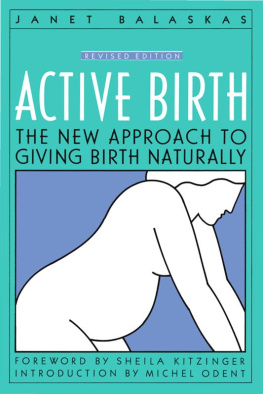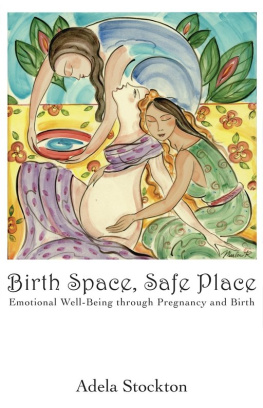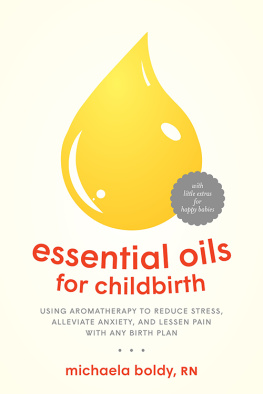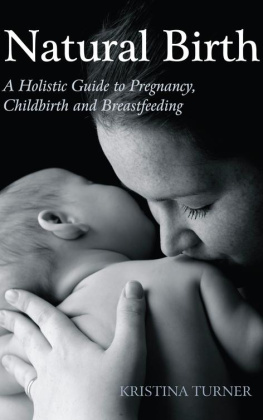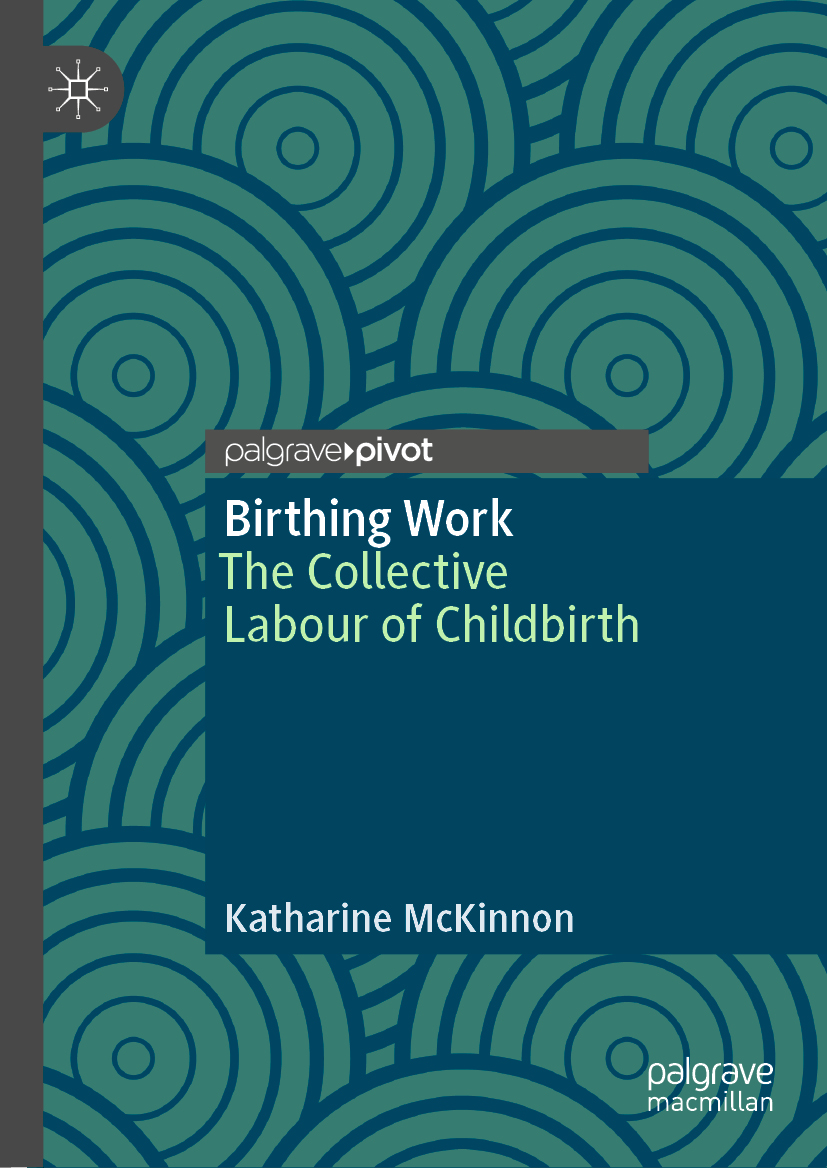Katharine McKinnon
Birthing Work
The Collective Labour of Childbirth
Katharine McKinnon
Department of Social Inquiry, La Trobe University, Bendigo, VIC, Australia
ISBN 978-981-15-0009-1 e-ISBN 978-981-15-0010-7
https://doi.org/10.1007/978-981-15-0010-7
The Editor(s) (if applicable) and The Author(s), under exclusive license to Springer Nature Singapore Pte Ltd. 2020
This work is subject to copyright. All rights are solely and exclusively licensed by the Publisher, whether the whole or part of the material is concerned, specifically the rights of translation, reprinting, reuse of illustrations, recitation, broadcasting, reproduction on microfilms or in any other physical way, and transmission or information storage and retrieval, electronic adaptation, computer software, or by similar or dissimilar methodology now known or hereafter developed.
The use of general descriptive names, registered names, trademarks, service marks, etc. in this publication does not imply, even in the absence of a specific statement, that such names are exempt from the relevant protective laws and regulations and therefore free for general use.
The publisher, the authors and the editors are safe to assume that the advice and information in this book are believed to be true and accurate at the date of publication. Neither the publisher nor the authors or the editors give a warranty, expressed or implied, with respect to the material contained herein or for any errors or omissions that may have been made. The publisher remains neutral with regard to jurisdictional claims in published maps and institutional affiliations.
Cover illustration: John Rawsterne/patternhead.com
This Palgrave Pivot imprint is published by the registered company Springer Nature Singapore Pte Ltd.
The registered company address is: 152 Beach Road, #21-01/04 Gateway East, Singapore 189721, Singapore
In this fantastic contribution, Katharine McKinnon provides mothers, birthing professionals and academics stuck in the birth wars with tools to unpack the birthing experience. Readers will be enthralled with the wide array of options to negotiate the birthing space and process. Birthing Work is filled with gripping stories, of McKinnons own birthing experiences and that of a range of women and birthing professionals. This is a must read for all those involved in the work of child birth.
Gerda Roelvink, author of Building Dignified Worlds: Geographies of Collective Action
This book doesnt just nudge old debates about birth in different directions; it spurs them into entirely new territory prompting readers to consider how humans and more-than-humans assemble around birth. Weaving together stories and conversations with mothers, midwives and doctors, Katherine McKinnon highlights the diversity of experiences of childbirth, resisting any singular universal truth. Babies, bodies, beds, institutions, machines and clocks act collectively to shape pregnancy and birth, enabling a range of different processes to unfold. Birthing Work is an important volume for human geographers but also for anyone interested in radically rethinking childbirth, labour and love.
Robyn Longhurst, Deputy Vice-Chancellor Academic and Professor of Geography, University of Waikato, New Zealand
This small book about birth is a gold mine of observations, reflections and conjectures about the terrain of human birth. The terrain of childbirth is a disputed territory in our society. Dr. McKinnon describes all the players, both animate and inanimate, in that disputed terrain. The book goes beyond the disputes and offers rich insights into the many corners of childbirth. The book draws on the experience of individuals; it draws on several disciplines, including midwifery, obstetrics, philosophy, biology, sociology, human geography and quantitative epidemiology and thereby suggests ways of thinking and acting beyond our current constraints.
Andrew Bisits, Obstetrician, Maternity Medical Co-Director at Royal Hospital for Women, and Conjoint Associate Professor at UNSW School of Women and Childrens Health
Preface
As a mother of three, I have muddled my way through pregnancy and birth in three different places, with three different sets of doctors and midwives. Each time I had to make, and remake, decisions about tests and scans, about how to manage work commitments, care for my changing body, my children, my home, whether and what kind of medications to take or not take, what kind of food to eat, what kind of breastfeeding/swaddling/baby transport/toileting paraphernalia to commit to. Each of these involved some degree of choice and some expression of the values my partner and I hold around pregnancy, birth and childrearing. This project began in the year following the birth of my second daughter at a time when I felt acutely dissatisfied with the intellectual resources available to me as I navigated the sticky spaces of parental decision-making. I wanted something other than moralising discourses about right or wrong choices, the pervasive sense of mother-blame, or the false neutrality of the clinical-sounding language that seemed to infuse so much of the information available to me. It is with this dissatisfaction that this project was born, and, equally, with a desire to find language for the experience of childbearing, an experience that is both deeply profound and profoundly hard work. In this book, I hope to both honour that profound experience and provide some new ways of thinking about what the work of childbirth is and what it means to do that work.
It is always the case that a researcher, an author, is implicated in the design and the findings of the research. Objectivity is always an impossibility. But in the case of this project, I have been more deeply and more personally implicated in the subject matter than ever before. In this book, I have worked to put my own commitments to one side and write from the stories that women shared with us in interviews. I have endeavoured to be true to their views and experiences. But I also acknowledge that there is no way to take a completely neutral position either. This is one reason why each chapter begins with a story taken from my own experiences of childbirth. These were written as I reflected on my births and sought moments that spoke to the themes of that chapter. This is part an acknowledgement that my interest in the issue of childbirth is as much personal as professional, part a desire to connect with readers at an emotional as well as intellectual level, and in part an effort to enact something Ive elsewhere called naked scholarship (McKinnon, 2017): an attempt to work as an academic with an open heart, to make clear my own cares and concerns, while creating a space where the related cares and concerns of others can also stand strong.
When we write things down we are always telling a story, and stories do an unavoidable violence to the messy complicated smudginess of embodied everyday life. Narratives tidy everything up, creating order and meaning. And this always requires an exclusion of something, a decision to make some part of that reality invisible or unimportant. Academic texts are particularly skilful in this regard, as they are often written from the voice of authority, the knowingness of the expert. In these texts there is little room for the flawed, fuller, humanity of the speaker to be heard. I have sought to write this book in a different kind of voiceone that, I hope, begins to practise open-heartedness and emotional connection as a value even within academic texts. I also have sought to make this text accessible to readers outside my field of human geography, thus keeping discussions of theory to a minimum, and attempting to purge the text of unnecessary jargon.


